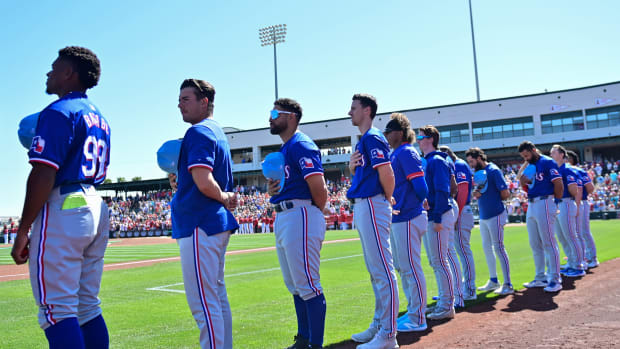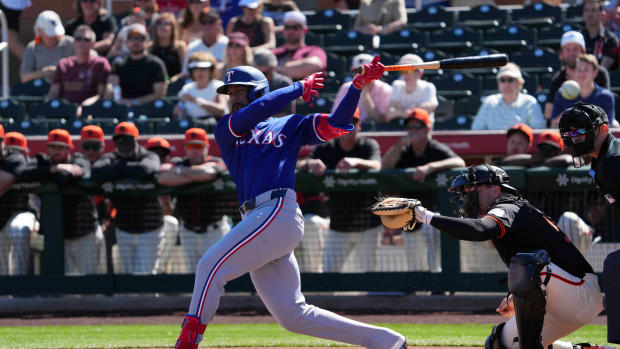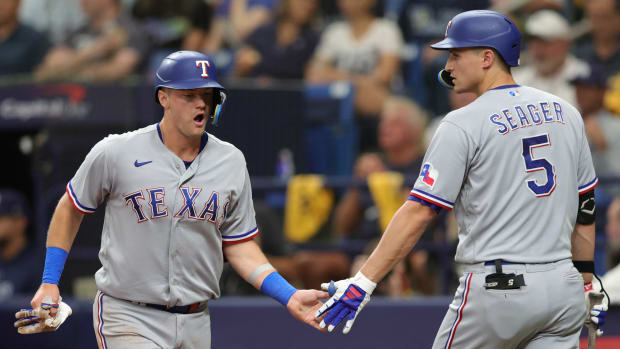Texas Rangers Will Be Cautious With Starting Pitching in Preparation for 2020 Season
The starting rotation is the backbone of the 2020 Texas Rangers. If they live up to expectations, they could be among the very best in baseball. However, the 2020 regular season—assuming there is one—will be a unique challenge.
All five pitchers have the ability to pitch deep into ballgames. Lance Lynn, who finished fifth in the American League Cy Young voting, pitched at least five innings in all but one of his 33 starts in 2019. Prior to his injury-plagued 2019 season, Corey Kluber had logged at least 200 innings in five straight seasons. Mike Minor also eclipsed the 200-inning mark as an all star last season.
At the back end of the rotation, Jordan Lyles has pitched at least 141 innings three times in his career and Kyle Gibson is one of 10 AL pitchers with at least 800 innings since 2015.
A rotation that boasts five guys that can eat innings is not something to overlook, and could even be the catalyst for a postseason run in a truncated season.
As pitchers had to hit the pause button over 11 weeks ago, the Rangers are now erring on the side of optimism that Major League Baseball and the Players Association will work out a deal so Spring Training 2.0 can commence in the weeks ahead. In turn, pitching coach Julio Rangel is getting his group ready to go.
"Right now, we have been – since [May] 18 – asking the pitchers to ramp up a little bit and adding a little more intensity to their bullpens," Rangel said in a conference call on Thursday. "For the starters, start simulating a little more of the ups and downs. A lot of them have been facing hitters where they are at in their hometowns."
Mike Minor has been working in Knoxville, Tenn., and was scheduled to throw live batting practice on Thursday. Lance Lynn has a few players working with him in Nashville, Tenn., including former Texas Rangers infielder Logan Forsythe. Lynn is supposed to get up to 65 pitches over four simulated innings this week.
Corey Kluber left his home in Boston and spent a couple of weeks in Jupiter, Fla., where he threw two live batting practice sessions. Kyle Gibson is throwing live batting practice to local college players near his home in St. Louis, and is up to 50 pitches over three simulated innings. Only Jordan Lyles has been unable to throw live batting practice at his home in Colorado, but has still been able to build up to 50 pitches over three innings as well.
With the aid of technology, Rangel has been able to monitor his pitchers' workouts from his home in Florida. As the team prepares for a potential spring training at the club's brand new Globe Life Field in mid-June, pitchers are going to have to be ready to hit the ground running.
"The goal is going to be that when they get here for (training camp) that they will be ready to pitch two or three innings out of the gate," Rangel said. "I am confident we are going to accomplish that easily."
With only three weeks to prepare for the season, the Rangers are going to be cautious with the workload they give their starters. Rangel and manager Chris Woodward haven't specified a number yet, but the starters will be limited at the outset of the season.
"As long as the guys have done what they need to do at home before they report, the goal that we have for our three weeks of spring training is to try to get them at least to 75-80 pitches," Rangel said.
"Once the season starts, we might not let them go as deep just to make sure the guys are getting back into shape, feeling good, and bouncing back well from outing to outing. Once we see that, and they are able to get at least two or three outings where they get through five [innings] and 90 pitches, then we’ll start letting them go a bit and go from there."
Barring injury, the Rangers would be 15 games into a presumed 82-game season by the time the starting pitching is ready to start flirting with the century mark. Texas may be forced to rely on some other arms occasionally to aid in getting the starting five ready to pitch deep into games. Guys like Taylor Hearn, Jonathan Hernandez, and Luke Farrell have starting experience and have the ability to go multiple innings, giving the Rangers much needed flexibility in a unique season.
"Early on, it's good to have guys who are capable of going three innings, if possible," Rangel said. "And as (starters) get stretched out, we can adjust."
While the Rangers were at spring training in Surprise, Az., Hearn began the process of converting to a relief role, with a key component being the lack of innings after almost an entire year lost to injury. The coronavirus shutdown has changed the landscape of the 2020 season, but Hearn remains steadfast in his flexibility.
“This year is definitely going to be very different," Hearn told InsideTheRangers.com. "I’ve always had an open mind and been able to adapt and adjust to what they need me to do.”
Adjustments will be paramount as the Rangers will attempt to navigate through an abbreviated training camp and regular season. In order for the Rangers to compete, it's going to take shrewd managing with the pitching staff in a season where each game carries more weight than usual.
Follow Inside The Rangers on SI on Twitter: @SITexasRangers
Like Inside The Rangers on SI on Facebook: facebook.com/SITexasRangers
Follow our Rangers insider Chris Halicke on Twitter: @ChrisHalicke
Click the "follow" button in the top right corner to join the conversation on Inside The Rangers on SI. Access and comment on featured stories and start your own conversations and post external links on our community page.




